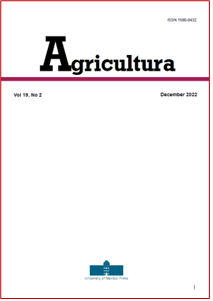Deviation of the Secondary Sex Ratio after Natural Mating or Artificial Insemination in the Domestic Pig: The Influence of the Sex Composition of the Breeding Population
Abstract
Sex ratio plays an important role in livestock production, with female animals often being favoured over males. To achieve the deviation towards the desired sex, breeding practise exclusively uses biotechnological methods aimed at manipulating the sex ratio of the offspring of farm animals, with sexed semen being the most widely used technique. However, there are also several local mate competition (LMC) or local resource competition (LRC). In wild mammal populations, competition for mates and resources is normally relaxed by dispersal, but not in domestic mammals, which normally live under specific (farm) conditions - unnatural sex composition of the group, no spontaneous dispersal of offspring due to captivity. One could therefore assume that local competition operates in the domestic mammal population. Accordingly, the aim of this short communication was to address the possible function of a type of (quasi)-LMC/LRC in domestic pigs under farm conditions and its possible influence on the secondary sex ratio of the offspring. Here the sex ratio of 1484 piglets, 1041 from artificial insemination (sires from allmale population, no female presence) and 443 from natural mating (sires from strongly female population composition), with all mothers from strongly female population composition, was studied. The sex ratio of piglets from artificial insemination was balanced (1:1; χ2 = 0.05, p ≥ 0.05), while the offspring from natural mating were significantly male-biased (χ2 = 4.99, p < 0.05). No clear relationship was found between sex ratio and litter size, parity or season. Although there are some limitations to the interpretation of the results presented here, it appears that the highly skewed sex composition of the population to which the breeding males/females belong may result in a more competitive mating environment, causing the sex ratio of the offspring to deviate towards the other sex, which is otherwise dominant in the population. This phenomenon of sex allocation in domestic mammals could be a tool in animal husbandry to manipulate (even if only slightly) the sex composition of the offspring of domestic mammals.
Downloads
Copyright (c) 2022 Janko Skok, Maja Prevolnik-Povše, Dejan Škorjanc

This work is licensed under a Creative Commons Attribution-NonCommercial-NoDerivatives 4.0 International License.

